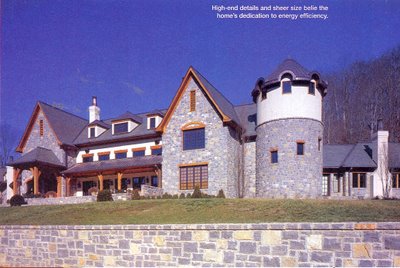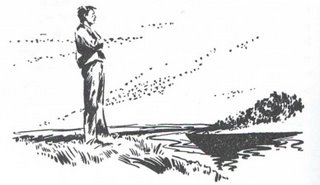One was just donated to the Tennessee Parks and Greenways Foundation which has the stupid idea of opening the island to the public as an "outdoor classroom" and to "preserve Tennessee's treasures." See the article.

Mary Lynn Dobson, a member of the foundation's executive committee, left, and Kathleen Williams, executive director of the Tennessee Parks and Greenways Foundation, approach Hill's Island. (SANFORD MYERS / THE TENNESSEAN)
Assuming we can't screw that deal, there are other islands in the Cumberland that we can "preserve."
Robertson Island
Size: 5.34 acres
Ownership: privately owned
Named for pioneer James Robertson. When he carved out land he wanted, it was near Richland Creek. The area was known as Robertson's Lick, and the island near where the creek enters the Cumberland bears the name "Robertson" also.
Lower City Island
Size: tiny
Ownership: uncertain; probably owned by the federal government through the U.S. Army Corps of Engineers.
Found near downtown, this island has eroded to a tree-speckled nub over the years. The Corps had no size estimate.
Gower's Island
Size: 16.3 acres
Ownership: privately owned
Named for Abel Gower, an early resident of Fort Nashborough. He was killed in an Indian attack. The island has been farmed in modern times and many talk about seeing the farmer ferrying his equipment over and back.
Harpeth Island
Size: 22.8 acres
Ownership: Corps owned.
The Corps acquired this along with pieces of land bordering the Cumberland River when Cheatham Dam was built. The flooding created Cheatham Reservoir, which is what the Cumberland River is officially called as it goes through Nashville.
~~
~~
~~
~~
~~
~~
Kathleen Williams, left, and Mary Lynn Dobson try to measure a
large maple tree on the island in the
Cumberland River. (SANFORD MYERS / THE TENNESSEAN).
[Editor's Note: nobody will do this on our island]

Our island classroom on the Duck was mostly about recess.
Hill's Island was valued at $20,000 which is about $1,000 an acre. We need club member Niarhos to find out who owns Robertson Island and give club member May authority to buy it in the name of the club for $5,000 or better yet get just it donated to us. Then we'll get club member Mullowney to build us a $16 million clubhouse on it just like the one he built in Leiper's Fork (as featured by club member Ditenhafer in Nashville LifeStyles Magazine)...

And in the club's autographed copy of Goodbye to a River, given by club member Balestrieri we find this:
There was an island, long and slim, built up of the variegated Brazos chert gravel, which, when wet and shining, looks like the jewels in a storybook treasure chest. Its top was padded with white sand and bordered by big willows and small cottonwoods. Toward the blunt upper end, where spring's drouth-breaking floods had worked to most effect, lay a bare-swept sandy plain, and the few trees along the shoreline there were bent downstream at steep angles. Against stubs and stumps down the length of the island the same force had laid up tangled jams of driftwood - ash and cedar elm and oak, good fuel. Here and there where silt had accumulated, Bermuda grass or weeds bristled in patches.
Because I liked the look of it, I stopped there in the middle of a quiet bright afternoon and made a solid camp on flat gravel under willows, eight feet above the water but only a few nearly vertical steps from the canoe. I was tired and my gear needed tending, and it looked like the kind of place I'd been waiting for to spend a couple of nights and to loaf through a little of what the abstractly alliterative military schedules used to call "matérial maintenance." Islands are special, anyhow, as children know with a leaping instinct, and when they lie in the public domain you can have a fine sense of temporary ownership about them that's hard to get on shores, insider or outside of fences.
Goodbye to a River, pp. 149-50.

~

No comments:
Post a Comment